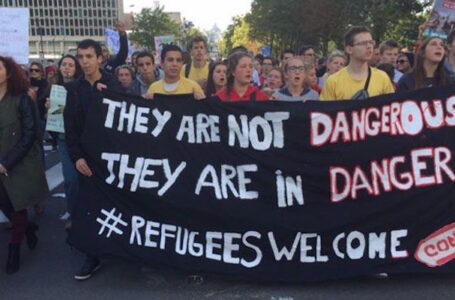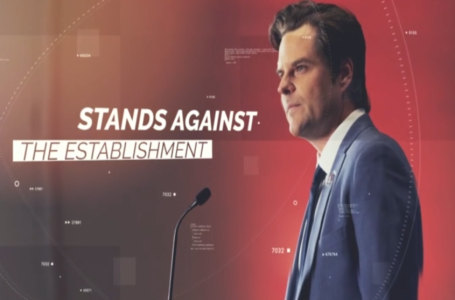Hamas’s Radical Ideology Runs into the Daily Government Grind

OBIDEN AND HARRIS SUPPORT THEM
by Yaakov Lappin
IPT News
August 12, 2021
Since taking control of the Gaza strip through a violent coup in 2007 and expelling Fatah, Hamas has tried to be many things – a governing regime, a terrorist organization, an organized army, and an Islamist hardline ideological symbol.
These efforts have seen Hamas’s radical ideology repeatedly collide with the “grind” of daily governance, and it is Gaza’s estimated 2 million residents who paid the price. Beyond the four armed conflicts that Hamas has fought with Israel since 2007, a steady flow of events, including a number of recent incidents, demonstrate that Hamas is no closer to giving up any of its many identities, no matter what the cost may be for the people that it rules.
A report Tuesday by Israel’s Kan public broadcaster said that Hamas was blocking a team of United Nations experts from examining the site of a tunnel entry point which was exposed during the May conflict with Israel. The tunnel is adjacent to a UNRWA school in Gaza’s Zeitoun neighborhood in the south of the Strip.
Hamas security forces reportedly arrived on the scene and banished the bomb experts working to secure the area – demonstrating how important it is for Hamas to continue to be able to use schools, hospitals, mosques, and residential buildings as shields for its military-terrorist activity against Israel.
In a highly unusual development, UNRWA released a statement Wednesday condemning “the existence and potential use of such underground structures, including tunnels, in the strongest possible terms,” adding that “letters of protest have been sent to the de facto authorities in Gaza,” meaning Hamas.
In the letter, UNWRA also protested “the takeover by the de facto authorities of one of these schools, which undermines the inviolability and neutrality of UNRWA premises. These actions also stand to compromise the safe return of children to their schools and scuttles the Agency efforts to open schools on time.”
Separately, at the end of July, a bomb tore through a wedding party that was held by a relative of a former Fatah security chief in Gaza, Mohammad Dahlan, who is based in the UAE.
The wedding was held Gaza’s southern Khan Younis area, and the blast injured over 50 people, according to reports.
Hamas police said it arrested three people in connection with the incident, but did not name them, yet Dahlan has accused Hamas members of planting the explosive.
Reuters quoted a relative who was at the wedding as saying that the family believed that “hatred for Mohammed Dahlan” was the motive for the bombing.
The incident serves as a reminder of the fact that Hamas seized Gaza from Fatah in a deadly and brutal coup. Since doing so, rather than building new opportunities for Gazans, Hamas has busied itself by creating a rocket production industry, firing many thousands of projectiles at Israeli cities. It has built a terrorist army made up of 30,000 men on the Strip, equipping them with a range of weapons, tunnels, and other means, while prioritizing its military force build-up over any civilian interest in Gaza.
Hamas’s efficiency in raising funds for its military and terrorist activities was placed in the spotlight this week, when an investigation by German daily national newspaper Die Welt exposed a Hamas-owned corporate network, which is also active in Germany, worth hundreds of millions of dollars.
“This is how they finance terrorism,” Israel’s former representative to the UN, Danny Danon, tweeted on Wednesday, commenting on the report. “This is how its leaders get rich while the people of Gaza suffer,” he added. Danon called for sanctions to be imposed on all of the companies listed in the report.
The report joins a long list of examples of how Hamas prioritizes its terrorist activities over the civilian-economic needs of Gazan civilians.
The IDF has exposed multiple ways in which Hamas siphoned off building materials – millions of tons of which entered Gaza in past years, and diverted them away from civilian building projects towards tunnel construction activities.
Similarly, most of the estimated $500 million that Hamas earns annually from taxes on goods entering Gaza from Egypt goes to the Qassam Brigades, not to civilian needs.
Hamas is now demanding that Qatari assistance funds – tens of millions of dollars per month – begins flowing again to Gaza. The money is meant for 100,000 needy Gazan families, but some observers have said they had little doubt that a portion of the cash has in the past ended up with the military leaders.
There is no doubt that Gaza’s civilians require humanitarian and economic assistance due to their regime’s uncompromising ideological commitment to use their areas as a launchpad of aggression against Israel.
The IDF has made the goal of contributing to Gaza’s humanitarian and economic situation a core goal of its strategy for Gaza, while also seeking to disrupt Hamas’s ambitious force build-up programs.
In the meantime, as long as Hamas continues to rule Gaza, it can be counted on to exploit every possible avenue to build rockets, orchestrate terror cells in the West Bank, dig combat tunnels, and use attempts to assist Gaza’s long-suffering civilians for its own military gain.
IPT Senior Fellow Yaakov Lappin is a military and strategic affairs correspondent. He also conducts research and analysis for defense think tanks, and is the military correspondent for JNS. His book, The Virtual Caliphate, explores the online jihadist presence.
########################
















